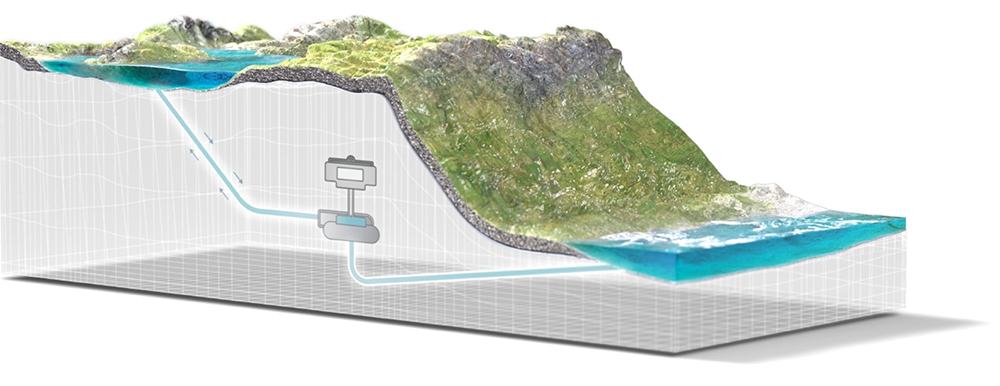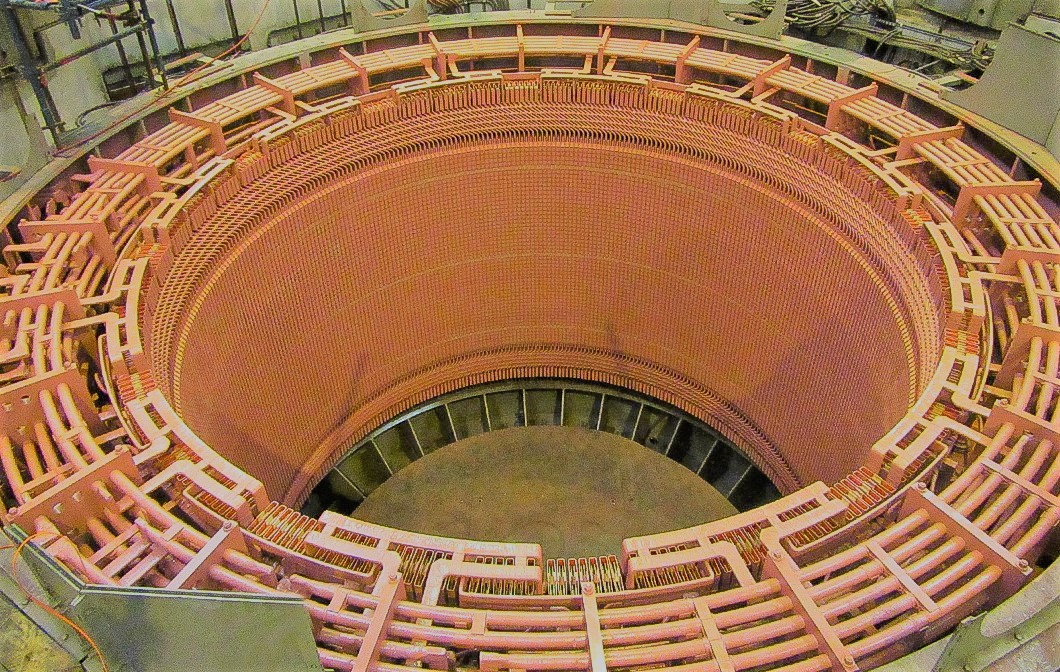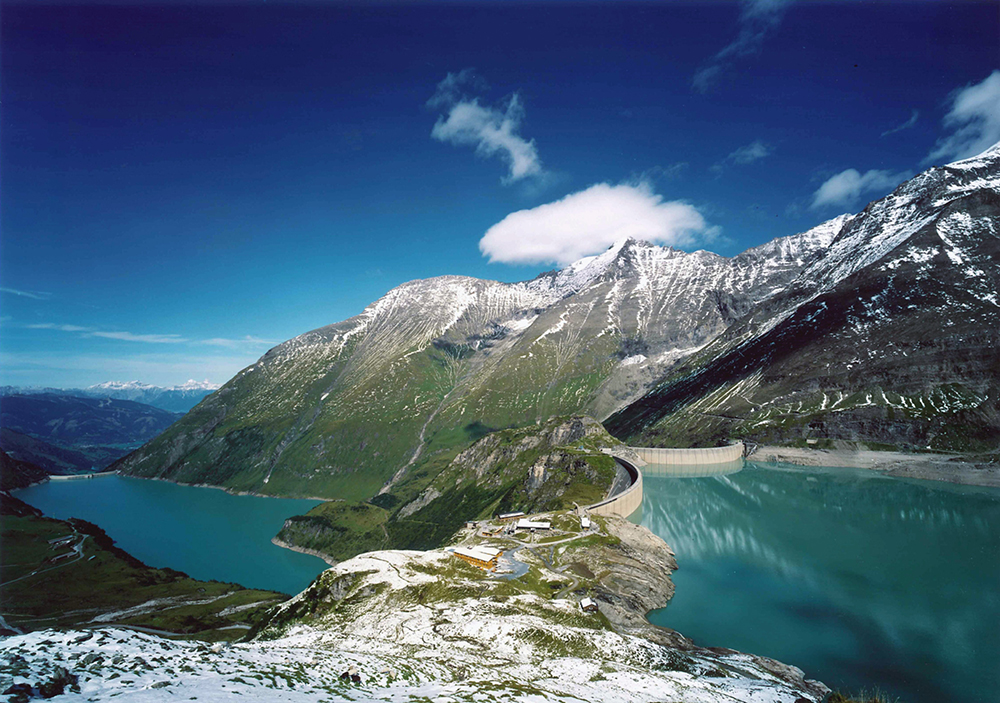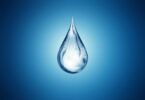Exclusive interview: H2O Global News’ Sion Geschwindt spoke with Voith Hydro Head of Service South Africa, Anton Harris, about Voith’s recent upgrade to Eskom’s Drakensberg Pumped Storage Hydro Plant, and the potential of this technology, and hydropower more broadly, to facilitate the clean energy transition
We are in the midst of a global energy transition; from fossil fuels to renewable technologies such as solar, wind and hydropower.
Investment in renewables has skyrocketed in recent years, with the International Energy Agency (IEA) predicting they will make up 70% of all new energy expenditures in 2021.
This rapid uptake of clean energy is brilliant news, but there are still many hurdles to overcome. One of which is storage.
Unlike fossil fuels, renewable energy is often intermittent and seasonal and must be stored for when the wind isn’t blowing or the sun isn’t shining.
There are many possibilities to store energy, but the only proven large-scale technology currently available is Pumped Storage Hydro (PSH).
What is Pumped Storage Hydro?
PSH is a type of hydroelectric energy storage. It is a configuration of two water reservoirs at different elevations, where power is generated as water flows from the upper reservoir, through the turbines and down to the lower reservoir.
When there is a surplus of energy, the system pumps water back up, releasing it again when needed. PSH is often referred to as a water or ‘green’ battery because it can store and release power on demand.

Pumped Storage Hydro basic design
Currently, PSH is the world’s largest battery technology, accounting for over 94 per cent of installed energy storage capacity – well ahead of lithium-ion and other battery types. As the energy transition gains momentum, the popularity of PSH as a storage solution is set to rise.
Global Leaders
Reaching the potential of PSH requires the maintenance of existing plants and the building of new ones. A global leader in this regard is Voith Hydro.
Voith has been offering hydropower solutions for over 150 years, having equipped some of the world’s most notable pumped storage, and run-of-river, hydropower plants.
“Pumped storage technology is based on the only long-term, technically proven and cost-effective form of storing energy on a large scale,” said Voith Hydro Head of Service South Africa, Anton Harris, from his office in Johannesburg. “Hydropower enables the integration of wind and solar and is essential in order to comply with the global and local CO2 reduction targets stipulated by governments.”
Harris heads up a Voith team of local experts from across Southern Africa with decades of experience in the energy sector. He recently led the refurbishment of a pumped storage plant in South Africa, extending its operation by a further 40 years.
Voith was contracted by South African Power Producer, Eskom, to upgrade and modernise the generators at their Drakensberg Pumped Storage Plant (PSP). The generator stators (part of the generator’s stationary system) were causing excessive heat and vibration, which Voith engineer’s remedied by replacing them with an upgraded version. This task was carried out in the middle of the COVID-19 lockdown.

One of the Drakensberg plant’s turbine rotary systems
“Due to travel restrictions, no experts from Europe could come to South Africa so our local team had to step up and take over this responsibility – which they did superbly and I must say I am very proud of them,” said Harris. “We also received excellent remote support from the engineering department at the headquarters in Germany.”
Eskom is the primary public power producer in South Africa. For decades the utility has relied extensively on its coal-fired power plants to meet the country’s energy needs, but that is changing.
“It is apparent that South Africa is now making the transition to renewable energy,” said Harris. “We at Voith are there to support Eskom for this transition by building, refurbishing and servicing their pumped storage plants.”
PSH, and hydropower more broadly, has an important role to play in the energy transition, not just in South Africa, but globally.
The path to net-zero
“Hydropower is the largest source of renewable electricity generation in the world representing over 16% of global electricity production – more than all other renewables combined,” said Harris. “It is a proven, mature, predictable and price-competitive technology as it combines an unrivalled degree of efficiency with an extremely long, reliable plant service life and low CO2 emissions.”
The IEA’s landmark 2021 ‘Net Zero by 2050’ Report estimates that an additional 1300GW of hydropower is required if we are to meet the climate targets outlined in the Paris Agreement. This is double the current global capacity.
However, the hydropower industry isn’t currently growing fast enough to meet this target.
“Currently the hydropower industry is only growing at about 1% annually,” said International Hydropower Association CEO, Eddie Rich, in an interview with the Financial Times.
In contrast, wind and solar are growing exponentially. Hydropower is, in the words of IEA’s executive director, Fatih Birol, “the forgotten workhorse of renewables.”
Government and private investment are not what they used to be, partly because hydropower has gained a bit of a bad rep over the years.
In the past, the industry has come under scrutiny for not adequately addressing the impacts of dam-building and large infrastructure projects. However, the industry has come a long way since then, developing a set of standards and partnerships aimed at mitigating the risks of hydropower projects and optimising their potential as renewable energies.
“The industry has formulated a set of international standards for hydropower in collaboration with NGOS, governments and financial institutions,” said Rich. “There is no reason why any hydropower project in 2021 shouldn’t meet these social and environmental best practice guidelines.”
With these new guidelines, cross-sector partnerships, and modern technologies, hydropower is poised to take centre stage in the global energy transition.
High hopes for hydropower
Hydropower is not simply a standalone renewable solution, but an essential player in the renewable energy “team” – able to assist other technologies through its energy storage potential.
“It is estimated that every 1GW of hydro can support 6GW of wind or solar,” said Rich. “Renewables working together is what’s needed for the energy transition.”
Maximising this storage and production potential will be key to meeting net-zero targets.
“We need long-term, large capacity energy storage for when the wind does not blow and the sun does not shine,” said former Prime Minister of Australia and a director of the International Hydropower Association, Malcolm Turnbull, in a recent op-ed. “But unless we address that challenge now, we will either fall back on fossil fuels or face blackouts as our electricity supply becomes unreliable. This need for energy storage is the ignored crisis within the crisis.”
Expanding hydropower and PSH is clearly essential. However, in order for this to happen, governments across the world must create a friendly policy environment for these projects to thrive.
“Policymakers need to incentivize investment in sustainable hydropower right now,” said Turnbull. “They should start by putting in place incentives for new projects and providing de-risking mechanisms for investors such as long-term contracts, price floors and public-private partnerships.”
Two upcoming events will give the hydropower industry the opportunity to cement their position as leaders in the energy transition, attract investment and foster political support: the World Hydropower Congress this month, and COP26 this November.
Hydropower no longer has to be the forgotten workhorse of renewables. The industry is now primed to deliver sustainable, affordable and renewable energy and storage solutions, to accelerate the path to net-zero.
Do you have an article that you would like to share? Submit your article here or keep up with the latest news from the water industry and wastewater industry by subscribing to our weekly newsletter.







